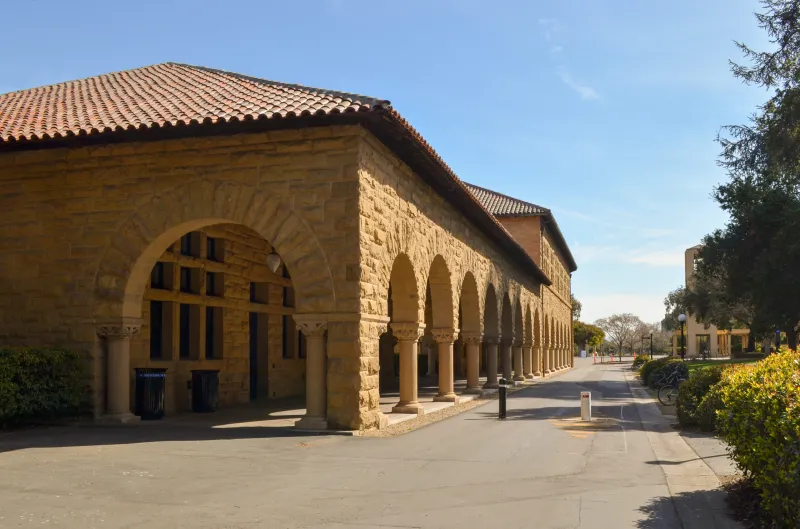When investigative journalism nonprofit ProPublica published “The Repatriation Project,” a comprehensive effort to track the museums and universities that still have Native American remains, the reporting made waves for its finding that numerous prestigious institutions still have the remains of thousands of people.
Stanford was not exempt, with ProPublica finding that the University’s Heritage Services still possess the remains of at least 36 Native Americans, having made available for return 25% of the 48 Native American remains that it reported to the government after 1990.
But the University has contested ProPublica’s presentation of the Native American Graves Protection Act (NAGPRA) data, on which the report is based. According to a University spokesperson, Stanford repatriated the remains of 1,027 Native Americans before the passage of NAGPRA, which became law in 1990 and requires institutions to publicly report their holdings of Native American remains.
The NAGPRA data indicates that Stanford has fewer remains than peer institutions such as the University of California, Berkeley and Harvard, which have the remains of over 9,000 and 6,000 Native American people respectively.
Heritage Services Director Laura Jones said, “We do not want to diminish the importance of the ancestral remains we continue to hold by focusing on some sort of ‘score.’ Each and every one of those people should be in the care of their communities.”
Prior to the passage of NAGPRA, Stanford returned the skeletal remains of over 1,000 people which had been stored in anthropological laboratories for research to the Muwekma Ohlone Tribe, according to University spokesperson Luisa Rapport.
“The NAGPRA data used by ProPublica is heavily skewed in our case because of the significant amount of repatriations that occurred outside of NAGPRA,” Rapport wrote. “Stanford is committed to meeting our obligations to native communities and to consistent outreach and collaboration with tribal partners.”
NAGPRA requires institutions to publicly report their holdings of Native American remains and to consult tribes on “cultural affiliation” and repatriation of remains or other objects.
Rapport wrote that repeated correspondence was undertaken with tribal representatives for all individuals held by Stanford, including tribes not currently recognized by the federal government.
In an email to The Daily, Associate Dean and Director of the Native American Cultural Center (NACC) Karen Biestman wrote that as a member of the campus Archaeology Collections Committee and as someone who teaches regularly about NAGPRA, she was “surprised to see the numbers quoted by ProPublica.”
“Stanford’s policy and practice favoring repatriation, transparency, and consistent outreach to tribal partners better describes my experience,” Biestman wrote. “Indeed, we were a national leader in these efforts even before the passage of [NAGPRA].”
According to reporters behind ProPublica’s database, the data published only includes remains reported under NAGPRA and does not include repatriations that took place before the act.
ProPublica reporter Ash Ngu clarified the confusion surrounding the data in a statement to The Daily on Friday. They added that they were “in communication with university representatives and expect to receive a statement from Stanford that will be appended [to previously published findings].”
Stanford has provided a public statement that has since been included on the ProPublica page, noting the University’s efforts to repatriate the remains. All remaining indigenous remains within Stanford’s care are “available for repatriation,” according to the statement appended to the page.
According to Rapport, in 1988, the remains of 440 people and their belongings were repatriated to the Ohlone Tribe; 577 additional individuals and belongings that had been on loan to San Jose State University were repatriated in 1989. The bones were between 500 and 3,000 years old.
Jones wrote that although Stanford has offered to return the rest the Native American remains it holds, it can be “very challenging” for descendants to receive the ancestral remains. The individual remains are sometimes incomplete, and in other cases, the tribes no longer hold the land where the remains were removed from.
“Each of the groups of people we hold has a sad story and carries evidence of shocking acts of colonial violence and racism,” Jones wrote. “Even the well-intended consultation can cause ongoing harm to descendant communities.”
In ProPublica’s report, more than half of 210,000 Native American remains have not yet been returned to their tribes by the 600 federally-funded institutions that reported data to the Department of the Interior.
Several institutions, such as the University of Tennessee, which still has 4,300 remains, and the American Museum of Natural History, which has 1,900 remains, avoided repatriation by categorizing collections as “culturally unidentifiable,” or too old to identify modern-day tribe affiliation,” according to the reporting.
Rapport wrote that after NAGPRA was enacted, Stanford filed all required inventory and updates and completed two repatriations. In 2012, ancestral remains and objects of cultural patrimony were repatriated to Santa Rosa Rancheria, and in 2016 ancestral remains and belongings were returned to a lineal descendant in Plumas County, Calif. Two additional repatriations were international: one to Australia and the other to New Zealand.
According to Rapport, no repatriation request to Stanford has been denied. One consultation resulted in affiliation to tribal representatives in Graton Rancheria, but there was no request to transfer the ancestral remains.
The Native American remains still at Stanford are inventoried and stored in a restricted access area until they are repatriated, according to Rapport, and can be reviewed by descendant communities. Repatriation requests are coordinated by the University Archaeologist or Executive Director of Heritage Services and are approved by the provost.
